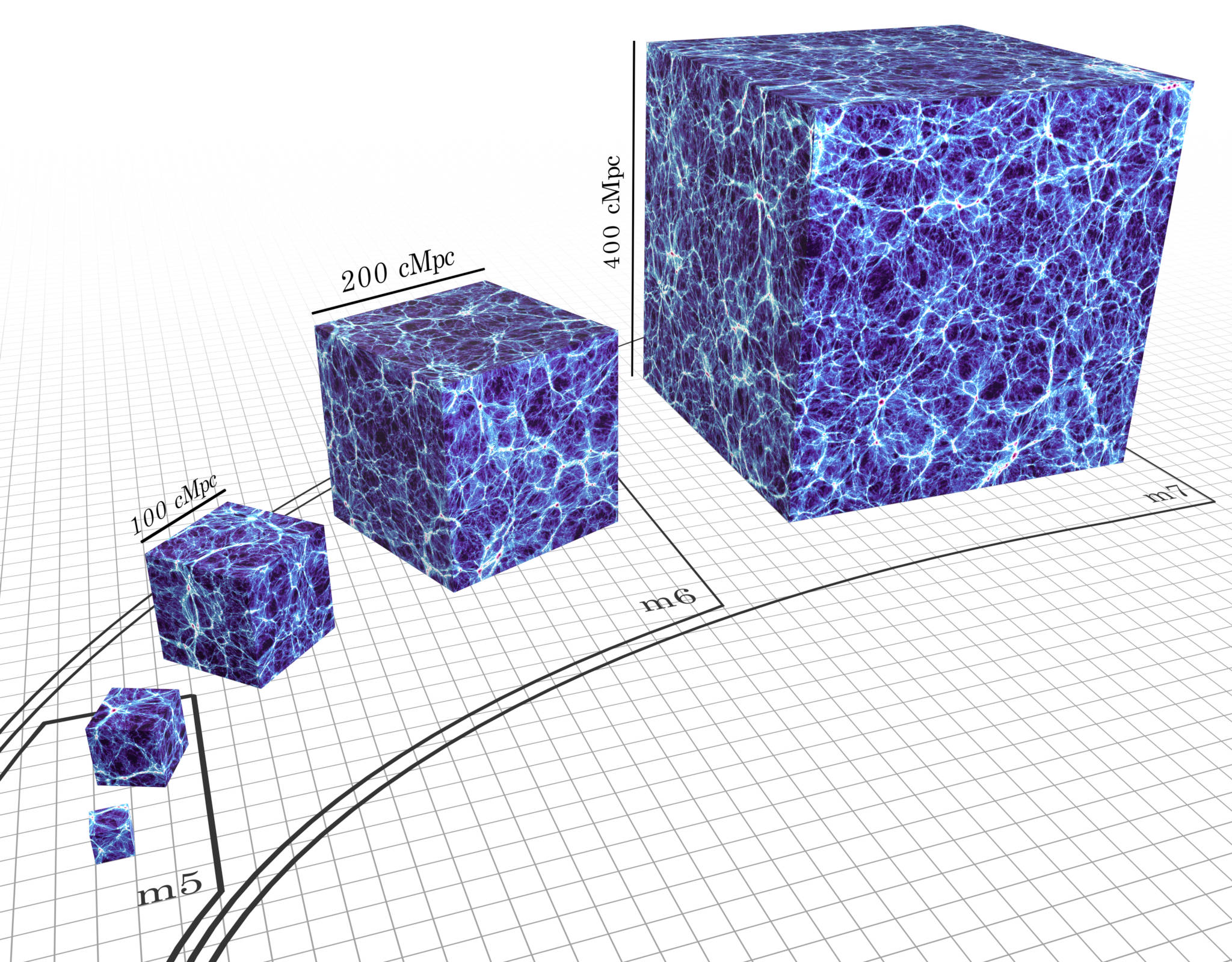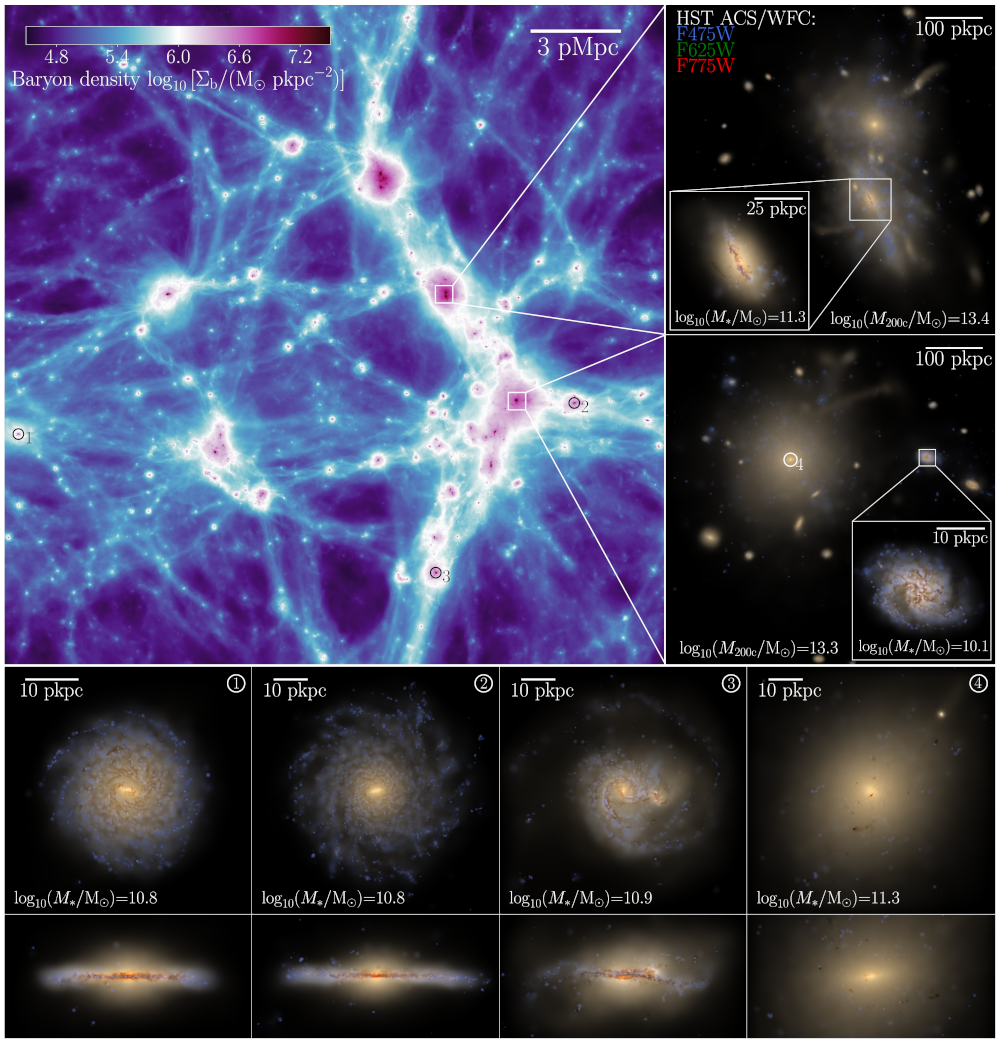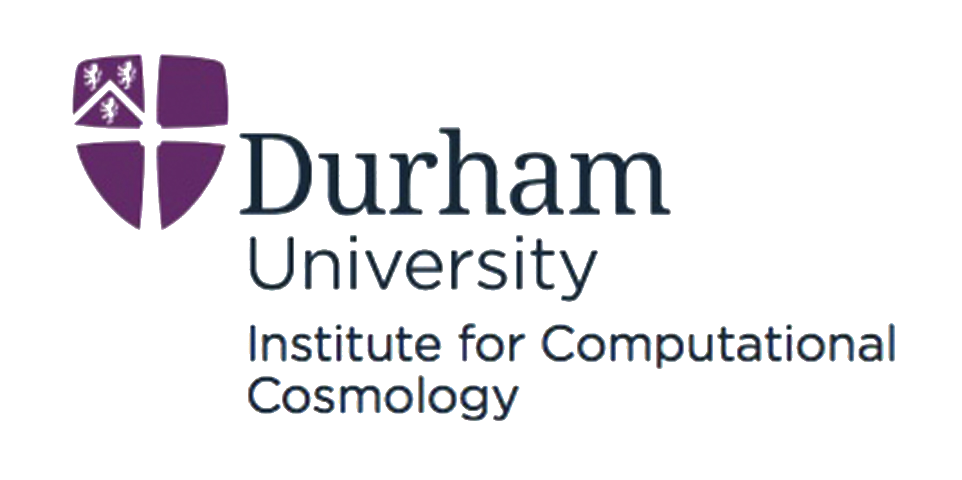The COLIBRE project
Cosmological hydrodynamical simulations of galaxy formation and evolution

The COLIBRE suite of hydrodynamical simulations model the formation and evolution of galaxies in representative volumes starting from cosmological initial conditions.

COLIBRE includes models for radiative cooling, dust grains, star formation, stellar mass loss, turbulent diffusion, pre-supernova stellar feedback, supernova feedback, supermassive black holes and active galactic nucleus (AGN) feedback. The multiphase interstellar medium is explicitly modelled without a pressure floor. Hydrogen and helium are tracked in non-equilibrium, with their contributions to the free electron density included in metal-line cooling calculations. The chemical network is coupled to a dust model that tracks three grain species and two grain sizes. In addition to the fiducial thermally-driven AGN feedback, a subset of simulations uses black hole spin-dependent hybrid jet/thermal AGN feedback. The subgrid feedback model is calibrated to match the observed redshift z ≈ 0 galaxy stellar mass function, galaxy sizes, and black hole masses in massive galaxies.
To suppress spurious transfer of energy from dark matter to stars, dark matter is supersampled by a factor 4, yielding similar dark matter and baryonic particle masses.
The COLIBRE suite includes three resolutions, with particle masses (for both baryons and dark matter) of ~ 105 (m5), 106 (m6), and 107 M☉ (m7) in cubic volumes of up to 50, 200, and 400 comoving Mpc on a side, respectively. The two largest runs use 136 billion (5 x 30083) particles. A list of the simulations in the suite can be found here.
Compared to previous cosmological simulations of representative volumes run to z = 0 using similar or even higher resolution, COLIBRE breaks new ground in several ways, including:
- The direct simulation of the multiphase interstellar medium (rather than imposing a temperature or pressure floor).
- The direct simulation of the evolution of dust grains and their coupling to the chemistry and cooling.
- The use of four times more dark matter than baryonic particles in order to suppress spurious transfer of energy from dark matter to stars.
- The availability of simulations using different models for black holes and AGN feedback that have been calibrated to the same observational data.
- The availability of simulations spanning two orders of magnitude in mass resolution that have been calibrated to the same observational data.
- The sheer size of the runs (e.g. 20 times more than used in the EAGLE simulation).
The acronym stands for COLd Ism and Better REsolution. Here ‘cold ISM’ refers to the absence of a temperature/pressure floor for the interstellar medium, and ‘better resolution’ refers to the larger ratio of cold dark matter to baryonic particles compared with most previous simulations, which increases the effective resolution (as does the absence of a temperature floor).

Project references
- The COLIBRE project: cosmological hydrodynamical simulations of galaxy formation and evolution (Schaye et al. 2025)
- COLIBRE: calibrating subgrid feedback in cosmological simulations that include a cold gas phase (Chaikin et al. 2025)
Data availability
The COLIBRE simulation data will eventually be made publicly available, although we note that the data volume (several petabytes) may prevent us from simply placing the raw data on a server. In the meantime, people interested in using the simulations are encouraged to contact one of the team members.
Acknowledgements
COLIBRE is a project of the Virgo consortium for cosmological supercomputer simulations. The COLIBRE simulations were run with the SWIFT code using the SPHENIX implementation of smoothed particle hydrodynamics (SPH) on the Memory Intensive DiRAC facility managed by the Institute for Computational Cosmology, Durham University.

